Wet Flies For Fly Fishing on River | An Expert Guide
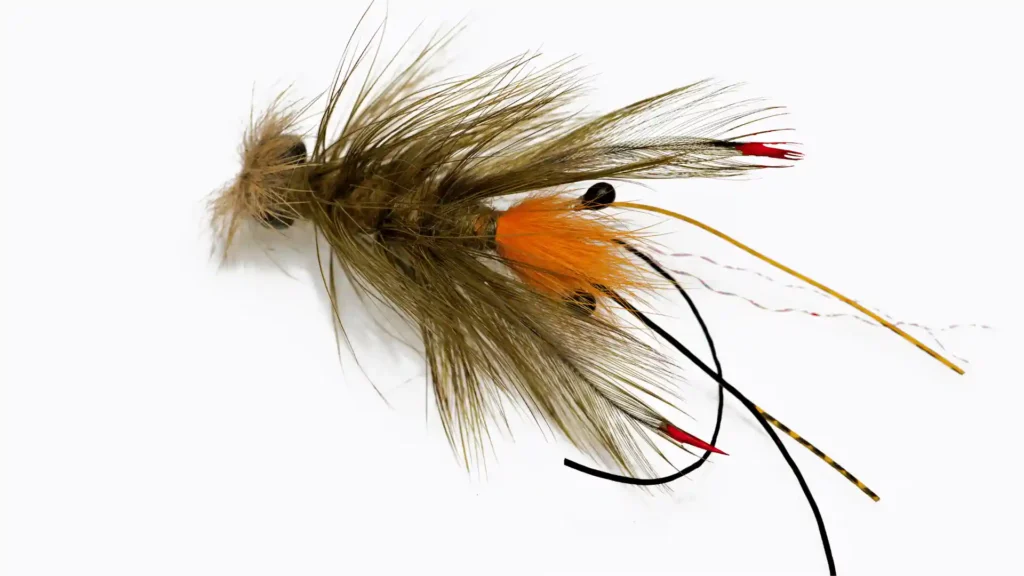
As someone who loves fly fishing, wet flies can be effective. It’s a technique where you put your fly under the water to mimic a bug and tempt fish to bite.
Unlike dry fly fishing, which targets fish on the surface, wet fly fishing works well when fish aren’t rising. You will get into trouble while fishing if you don’t have wet flies.
In this article, we’ll discuss wet flies for fly fishing, covering types, benefits, and techniques to improve your skills. Plus, we’ll share practical tips and advanced tactics for success on your fishing trips from my 16 years of fishing. Let’s dive in!
Understanding Wet Flies
Wet fly fishing is a technique that involves sinking your fly underwater to imitate insects and attract fish. In general, wet flies refer to a group of flies used in fly fishing that are meant to be fished under the water’s surface. They stand in contrast to dry flies, which are designed to float on the water’s surface and remain dry.
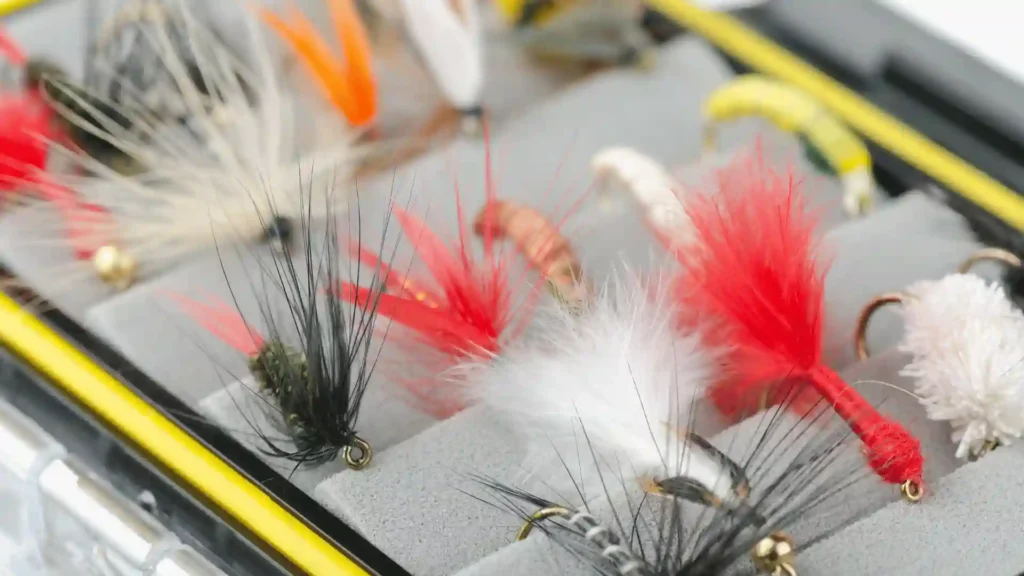
For beginners, it’s good to know there are various types of wet flies. Each type mimics different aquatic prey that fish like to eat.
Nymphs look like young insects and are best for slow water-like pools. Streamers imitate small fish or creatures and are used by casting upstream and letting them drift downstream.
Wet spiders resemble insects landing on water and are fished by floating on the surface.
When picking a wet fly, consider the water speed and the type of fish. Some work better in fast water, while others prefer slower currents. Adjust your casting and retrieval methods accordingly.
How To Use Wet Flies for Fly Fish?
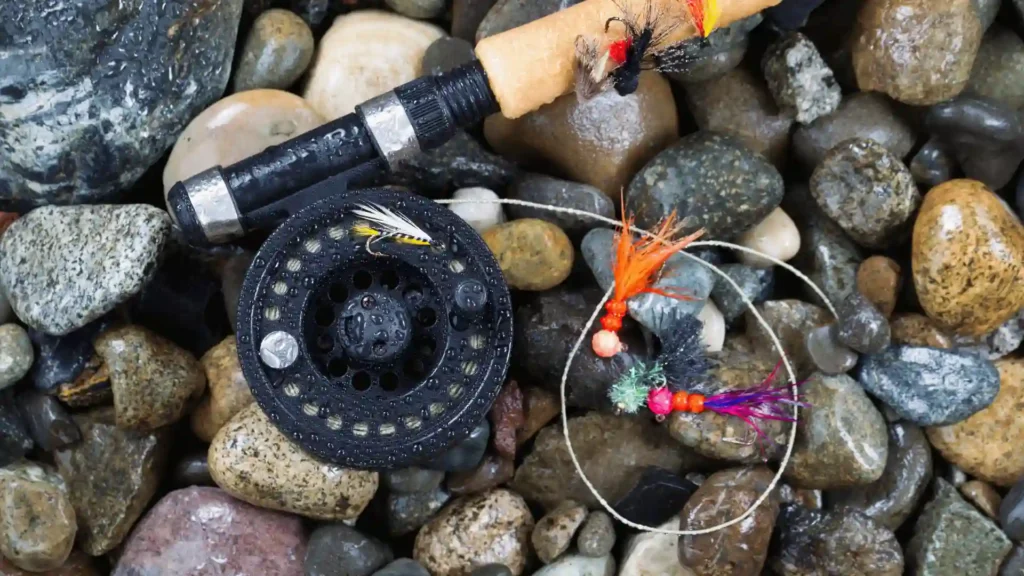
Fly fishing with wet flies involves presenting your fly beneath the water’s surface to imitate aquatic insects or other underwater prey. Here’s a concise guide:
- Select the Right Gear: Use a fly rod, reel, and line suitable for wet fly fishing. Opt for a rod with moderate action for better control.
- Choose the Right Flies: Select wet flies that match the insects or baitfish in your fishing water. Popular wet flies include nymphs, streamers, and soft hackles.
- The Blue Charm: Also known as “The Miller’s Thrill,” created by Bob Lindner in 1923.
- Understand the Water: Look for likely feeding areas where fish are likely to hold, such as riffles, seams, and eddies. Observe the water for insect activity to determine what flies to use.
- Presentation: Cast your fly upstream or across the current, allowing it to sink to the desired depth. Use a variety of retrieves, such as slow swings, pulsating strips, or erratic twitches to mimic natural movement.
- Mend Your Line: Use mending techniques to control the drift of your fly and avoid drag, ensuring a natural presentation.
- Stay Observant: Pay attention to any subtle strikes or indicators of fish activity. Set the hook quickly but gently to avoid spooking the fish.
- Experiment and Adapt: Be willing to try different flies, depths, and presentations until you find what works. Adapt your approach based on changing conditions and fish behavior.
- Practice Patience: Fly fishing with wet flies requires patience and persistence. Stay focused and enjoy honing your skills and connecting with nature.
The Evolution of Wet Flies For Fly Fishing
Like many aspects of fly fishing, wet fly fishing has its roots in England and Scotland. These early wet fly patterns, known as traditional wet flies, were used by fishermen targeting Atlantic Salmon.
They often featured a soft hackle collar or a large feathered wing and were cast at angles and swung in the current.
Traditional Wet Flies
Traditional wet flies are still used and are effective for catching trout and steelhead. However, some original recipes have had to be adjusted due to the extinction of specific bird species used in their creation.
These flies are typically made from animal byproducts and feathers. Still, modern fly-tying materials have made a more comprehensive range of patterns accessible to anglers and fly tiers.
Modern Wet Flies
With the advent of modern synthetic fly tying materials, anglers have been able to create new and innovative fly patterns.
Nymphs and wet flies can now be tied using natural and artificial materials, or even entirely synthetic materials, allowing for greater creativity and experimentation in fly tying.
Are Wet Flies Nymphs?
Technically, both nymphs and wet flies fall under the broader category of “wet fly.” However, most fly fishers see them as distinct types of fly designs, even though they’re both used underwater. There are differences in their designs that set them apart.
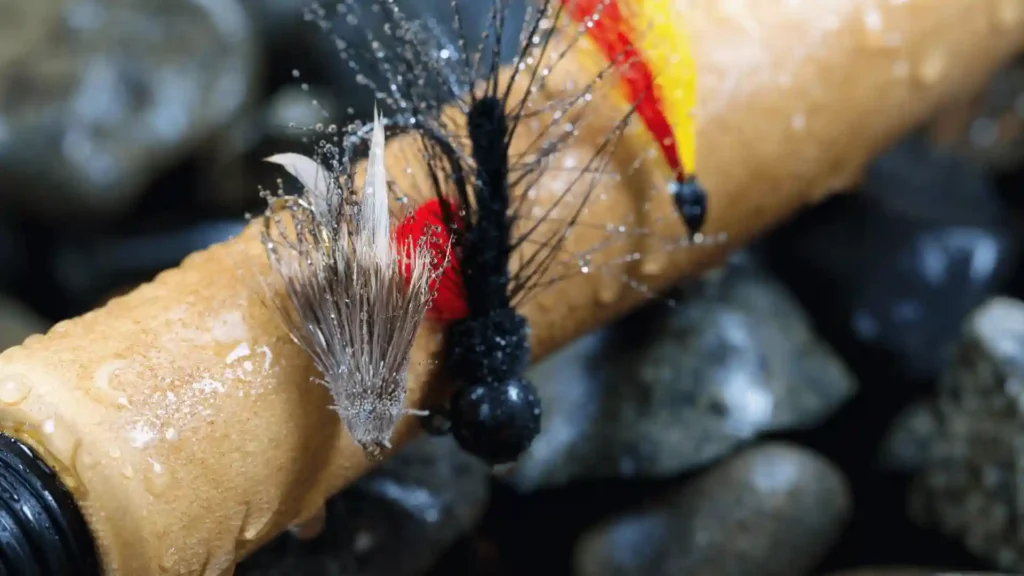
One noticeable difference is the presence of a soft hackle or feather wing in wet flies. A feather wing and throat hackle are usually included if there’s no soft hackle.
Common wet fly patterns include Bread and Butter Caddis, Partridge Hares Ear Soft Hackle, and Nick’s Soft Hackle Emerger.
Nymphs, conversely, have a more grub-like shape and lack traditional collars or wings. They often focus more on the thorax and are usually weighted to sink faster. Nymph patterns may include bead heads or lead under bodies for added weight.
Examples of common nymph patterns include the San Juan worm, pheasant tail nymph, zebra midge, and gold-ribbed hare’s ear.
Nymph patterns are often tied with a bead head or wrapped with a lead under the body to help the fly sink faster. Tungsten bead heads can be added to a traditional wet fly or bead head nymph if you need the flies to reach the strike zone fast.
Common fly fishing Euro nymphs that most fly anglers would be familiar with are the San Juan worm, pheasant tail nymph, zebra midge, and gold-ribbed hare’s ear.
Best Wets Flies of the 21st Century
Many of these patterns pay tribute to original wet flies dating back to the 1900s or earlier. Some are modernized versions with updated materials, while others retain their classic styles and names:
- The Black Spider: One of the oldest and most iconic wet flies. Its origin is unclear, but it’s believed to have been used as a headache remedy.
- The Black Bomber: Originally called “The Grouse Fly,” invented by Tom Cramer in the 1970s. It closely resembles the original patterns with slight variations in dubbing materials and offers color options based on water conditions.
- The Blue Charm: Also known as “The Miller’s Thrill,” created by Bob Lindner in 1923.
- The Silver Hilton: Developed by Tom Hilton in 1948, the Silver Hilton #8 remains popular among anglers worldwide.
- The Hare’s Ear Emerger: Another classic wet fly pattern that gained popularity in the 1920s and remains a favorite among anglers today.
Basic Casting and Retrieval Techniques for Wet Flies
When casting wet flies for fly fishing, it’s essential to use a similar technique to casting dry flies. Begin by casting upstream and allowing the damp fly to drift back downstream naturally, maintaining tension on the line with your rod tip.
Refrain from retrieving the wet fly too quickly, as this can make it appear unnatural and less enticing to fish.
When you feel a fish strike your wet fly, it’s essential to set the hook quickly and firmly to ensure the fish cannot escape. Always watch your line to detect even the slightest movement or tug, and be prepared to act quickly when you feel a fish on the other end.
By mastering these basic wet fly fishing techniques, you’ll be well on your way to a successful day on the water.
Tips and Tricks for Effective Wet Fly Fishing
Want to improve your wet fly fishing game? Look no further than these practical tips and tricks to maximize your success on the water.
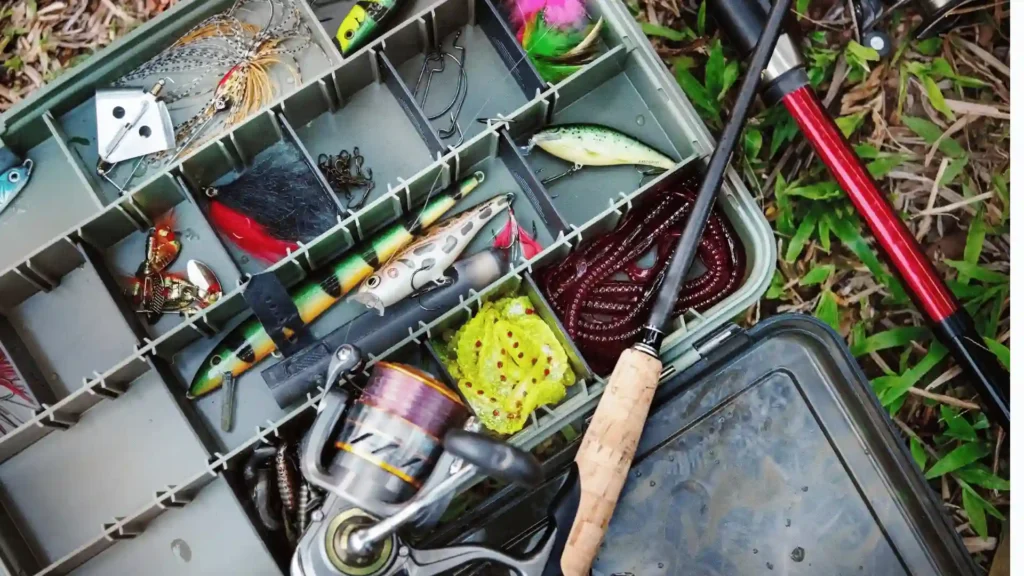
Select the Right Wet Fly for Specific Fishing Conditions
Various wet flies are available, and selecting the right one for the current fishing conditions is crucial for success. Consider factors such as water temperature, time of day, and the type of fish you are targeting when choosing your fly.
Feel free to experiment with different flies until you find the perfect match for the current conditions.
Present Wet Flies to Mimic Natural Prey
When presenting your wet flies, it’s essential to mimic the natural movements of the prey you imitate. It means using different casting and retrieving techniques depending on the type of fly you are using.
For example, a nymph should be presented slowly and lifelike. At the same time, a streamer should be retrieved with quick, jerky movements.
Target Different Species of Fish with Strategic Strategies
Each fish species has different preferences and habits, so it’s important to use strategic tactics when targeting them. Research the behavior and feeding patterns of the fish you target and adjust your presentation accordingly.
Additionally, consider the depth and location of the water where certain species are likely to be found.
Avoid Common Mistakes and Improve Your Technique
Even experienced wet fly fishers can make mistakes. Some common errors include casting too aggressively, using the wrong size leader, and setting the hook properly.
Focus on accuracy and control in your casting and retrieval to improve your technique. Additionally, practice setting the hook in a timely and effective manner.
By following these tips and tricks, you’ll be well on your way to becoming a master wet fly fisher.
Tactics for Productive Wet Fly Fishing
If you have gained a basic knowledge of wet fly fishing, it’s time to learn about tactics to enhance your success rate. As water types play a critical role, you should devise strategies accordingly.
Fishing in streams
Streams can be challenging as the current is the strongest here. Always cast upstream and let the wet fly float down with the current. The best areas to target are the eddies and any pockets behind rocks, where fish rest and feed.
Fishing in lakes
Lakes have their charm, but they can be tricky. Always stay on the move and use a boat to navigate to different areas. The best places to choose are where the fish are feeding.
Use a sinking line and make long casts, then retrieve the fly with a hand-twist. Apply a hand twist to the retrieve that mimics the natural movement of aquatic insects. You can also fly fish in a pond.
Fishing in rivers
Fishing in rivers requires extensive knowledge of the river’s flow. The best areas to target are the riffles, runs, and deep pools, where the fish hold or rest. Cast the fly upstream and retrieve it at an angle perpendicular to the stream’s flow.
Reading water and fish behavior
Reading water means being observant of the color and flow of the water, temperature changes, possible hatches, and the behavior of fish. It will help you identify the right location to target and select the correct fly pattern.
It is also critical to understand fish behavior, such as their location based on water temperature and time of day.
Using wet fly combinations
You can increase your chances of success by using a combination of wet flies to target multiple fish species. For example, using a nymph on the point and a wet spider on the dropper or two wet spiders in tandem can be effective.
Experiment with combinations and find what works best for you.
You’re now equipped with advanced tactics to help you become a seasoned wet fly angler.
Final Words
In conclusion, wet fly fishing is a rewarding and exciting way to catch fish. This article has provided valuable information on wet flies, including the types of wet flies, when and where to use them, and tactics for success.
Remember, wet fly fishing requires patience and practice, but you can become a skilled wet fly angler with perseverance.
Always remember the importance of selecting the right fly, presenting it effectively, and reading the water to locate feeding fish.
Please apply the tips and tricks discussed in this article, experiment with different wet fly combinations, and continue learning about this enjoyable method of fishing. You may catch the fish of a lifetime with dedication and luck. Happy fishing!
What are wet flies, and how do they differ from dry flies?
Wet flies are flies designed to fish below the water’s surface. They differ from dry flies in imitating insects that float on the surface. Wet flies contain weighted materials to sink.
They can mimic various aquatic life stages, including nymphs, larvae, and small baitfish.
When should I use wet flies for fly fishing?
Wet flies are effective in various fishing conditions and can be used throughout the year. They are instrumental when fish feed below the water’s surface or when there is minimal surface activity.
Wet flies are also effective in streams and rivers with strong currents, as they can reach fish holding in deeper pockets and runs.
What are some tips for selecting the right wet fly?
When selecting a wet fly, consider the current conditions and the type of prey fish are feeding on. Look for patterns that match the natural food source’s size, shape, and color. It can be helpful to carry a variety of wet flies in different colors and sizes to adapt to changing fishing conditions.
What are some techniques for presenting wet flies?
To present wet flies effectively, cast your fly upstream or across the current and let it drift naturally with the flow. You can vary the retrieve speed to mimic the prey’s movement.
Experiment with different retrieves, such as slow and steady, short strips, or erratic jerks, to entice fish to strike.
Can I use multiple wet flies at the same time?
Fishing with multiple wet flies can increase your chances of attracting fish. You can use a tandem rig where one wet fly is tied to the leader, and another is attached as a dropper.
This allows you to present different patterns or imitate multiple prey species simultaneously.
Are wet flies suitable for targeting specific fish species?
Wet flies can effectively target various fish species, including trout, bass, panfish, and salmon. The key is to choose wet flies that closely resemble the natural food sources of the target species.
Additionally, understanding your target fish’s feeding habits and behavior will help you select the appropriate wet fly and presentation techniques.

Meet Ibrahim Khan, an avid angler and author in Fishing Teach. He shares his wealth of knowledge from his 16 years of experiences in fishing. His articles are a captivating blend of practical insights and thrilling tales that invite readers into the enchanting world of fishing.
Ibrahim’s guides are your go-to guide in the realm of fishing on this informational site. Hailing from a coastal paradise, Ibrahim’s passion for angling is the heartbeat of his life.
